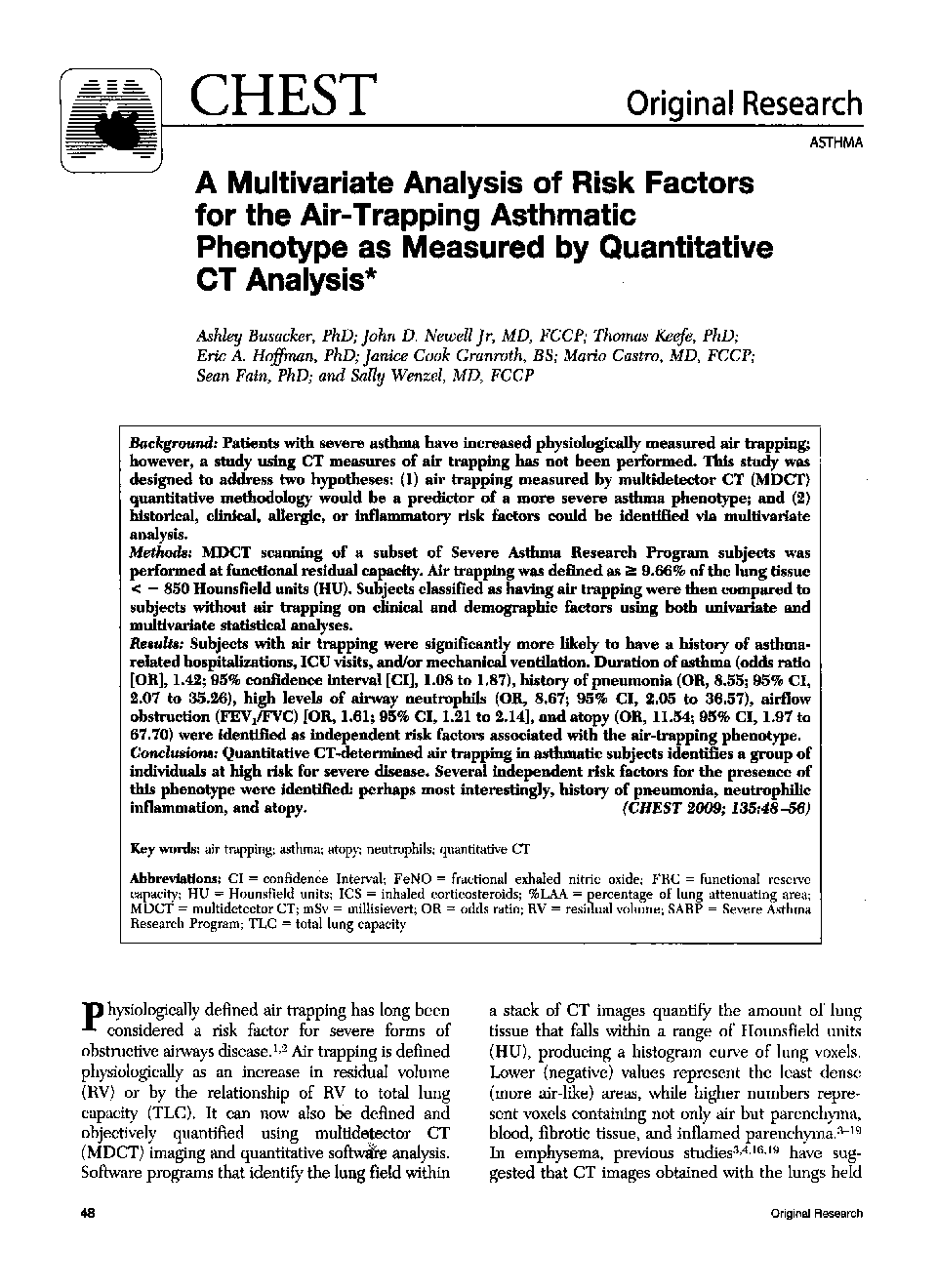| Article ID | Journal | Published Year | Pages | File Type |
|---|---|---|---|---|
| 2902530 | Chest | 2009 | 9 Pages |
BackgroundPatients with severe asthma have increased physiologically measured air trapping; however, a study using CT measures of air trapping has not been performed. This study was designed to address two hypotheses: (1) air trapping measured by multidetector CT (MDCT) quantitative methodology would be a predictor of a more severe asthma phenotype; and (2) historical, clinical, allergic, or inflammatory risk factors could be identified via multivariate analysis.MethodsMDCT scanning of a subset of Severe Asthma Research Program subjects was performed at functional residual capacity. Air trapping was defined as ≥ 9.66% of the lung tissue < − 850 Hounsfield units (HU). Subjects classified as having air trapping were then compared to subjects without air trapping on clinical and demographic factors using both univariate and multivariate statistical analyses.ResultsSubjects with air trapping were significantly more likely to have a history of asthma-related hospitalizations, ICU visits, and/or mechanical ventilation. Duration of asthma (odds ratio [OR], 1.42; 95% confidence interval [CI], 1.08 to 1.87), history of pneumonia (OR, 8.55; 95% CI, 2.07 to 35.26), high levels of airway neutrophils (OR, 8.67; 95% CI, 2.05 to 36.57), airflow obstruction (FEV1/FVC) [OR, 1.61; 95% CI, 1.21 to 2.14], and atopy (OR, 11.54; 95% CI, 1.97 to 67.70) were identified as independent risk factors associated with the air-trapping phenotype.ConclusionsQuantitative CT-determined air trapping in asthmatic subjects identifies a group of individuals at high risk for severe disease. Several independent risk factors for the presence of this phenotype were identified: perhaps most interestingly, history of pneumonia, neutrophilic inflammation, and atopy.
